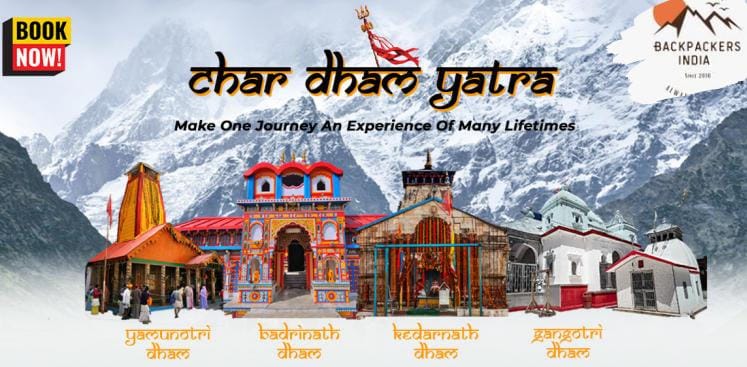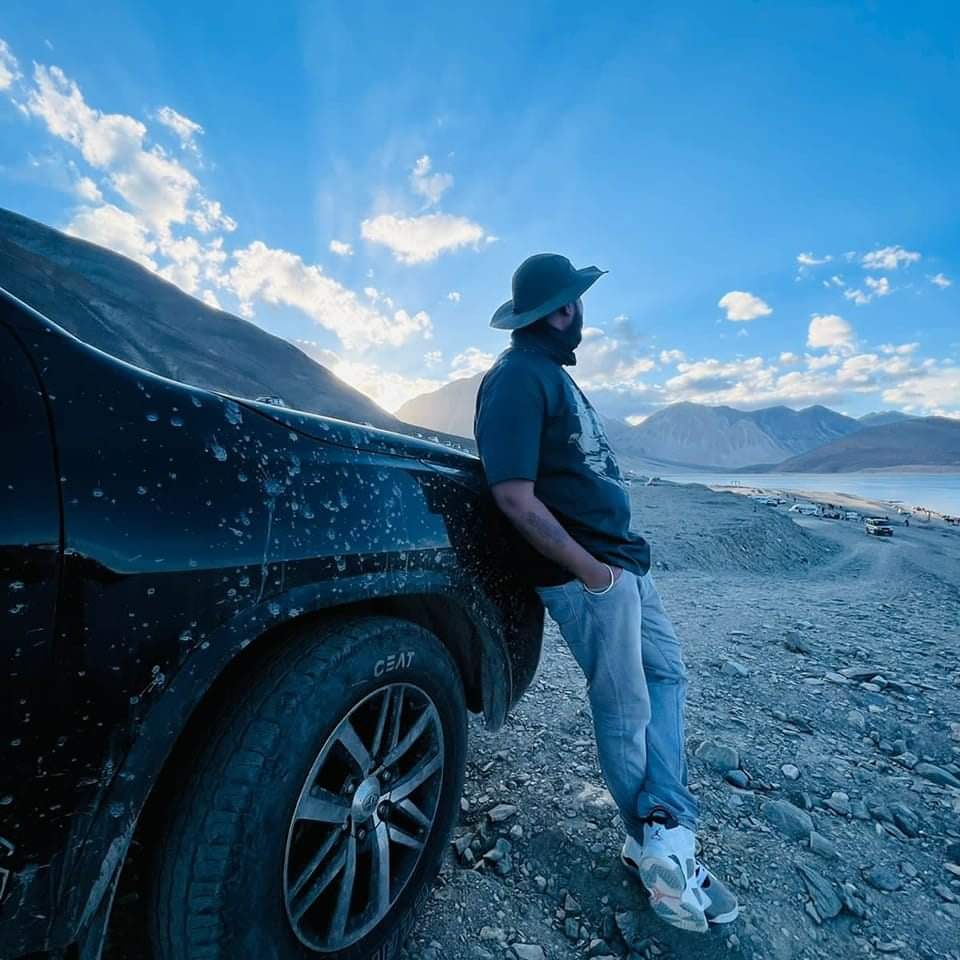The Char Dham Yatra of Uttarakhand which is also known as the Chota Char Dham Yatra in India, this Hindu pilgrimage circuit is considered to be extremely importance. As per Hindu mythology, the prominent saint and philosopher Adi Shankaracharya established these holy destinations and shrines of Badrinath Kedarnath Yatra, with an aim of evoking a spiritual feeling within the soul of devout Hindus. It is believed that if an individual goes on this pilgrimage to these holy centres then they will attain moksha (freedom from the cycle of birth and rebirth). Every year, annually these vital Dhams caters to almost 2 lakh devotees and tourists from all over the subcontinent and across the globe. Not only are these abode of the lord extremely sacred but the surrounding captivating beauty makes the journey worthwhile.
The Original Char Dhams
The First Char Dhams The original Char Dham, Badrinath, Dwarka, Puri, and Rameshwaram, according to the Indian philosopher Adi Shankaracharya, is made up of 3 Vaishnavite (belonging to Lord Vishnu) and 1 Shaivite (belonging to Lord Shiva) pilgrimages.
1. Badrinath
The town of Badrinath is located in the Garhwal hills of the modern-day Indian state of Uttarakhand, between the Nar and Narayana mountain ranges, on the banks of the Alaknanda River.
The primary deity in this place is Lord Vishnu, who is worshipped as Badrinarayan.
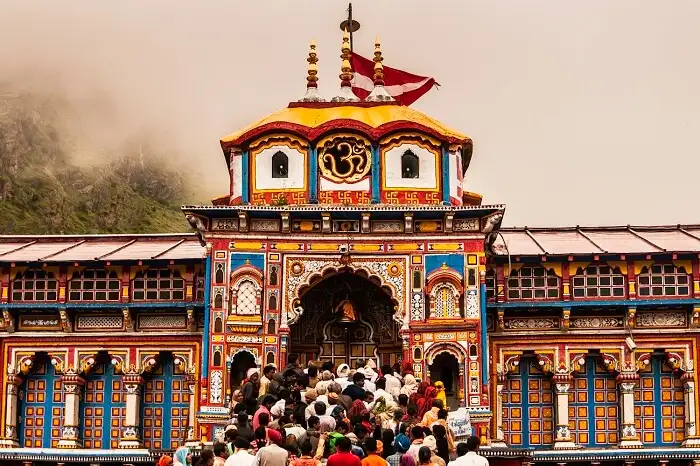
2. Rameshwaram
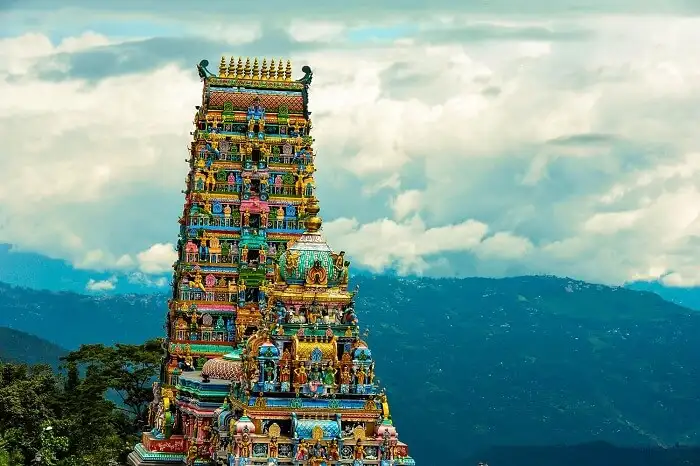
Rameshwaram, in modern-day Tamil Nadu in South India, is said to be the location from which Lord Rama constructed the Rama Setu Bridge to Sri Lanka. It is situated in the Gulf of Mannar.
However, Lord Shiva is worshipped in the Ramanathaswamy temple in Rameshwaram as a linga of Sri Ramanatha Swamy.
One of the 12 Jyotirlingas, according to legend, is the linga (Radiant signs of Lord Shiva).
3. Puri
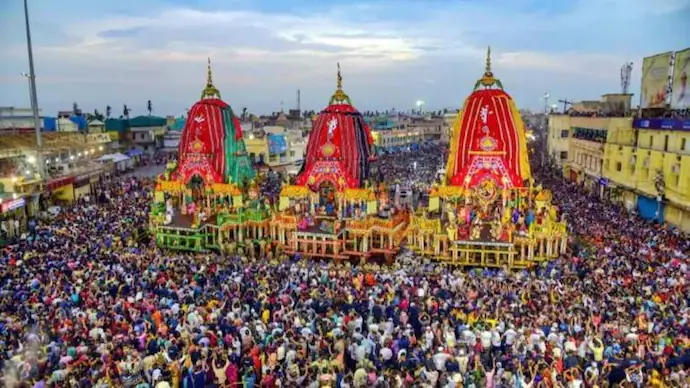
One of the oldest cities in East India is Puri, which is now in the state of Odisha.
This Vaishnavite pilgrimage site’s primary deity is Lord Krishna, also known by the name Lord Jagannatha.
Goddess Subhadra, Lord Krishna’s sister, and her brothers, Lord Jagannatha and Lord Balabhadra, are worshipped together in this one and only Indian shrine.
4. Dwarka

Legend has it that Lord Krishna lived in the fabled city of Dwarka, which is now in the state of Gujarat in West India.
According to legend, the city was drowned by the sea six times.
The seventh city to be built in this region is supposedly the Dwarka of today.
Lord Krishna is the main deity in this area.
The Chhota Char Dham Circuit

Following the 1962 Indo-China War, when India started funding infrastructure and road development projects, the Chhota Char Dham Yatra concept gained popularity.
Access to the sacred sites and other locations in Uttarakhand, formerly known as Uttar Pradesh, was made simpler by the area’s improved roads.
The original Char Dham was gradually replaced by the Chhota Char Dham.
The Chhota Char Dham could be completed in a fortnight as opposed to the original Char Dham, which took over a month.
There was a significant price difference between the two.
Now, it would be simple for more people to make this pilgrimage.
Within 10 to 15 kilometres of the nearest motorable point, pilgrims could take buses and jeeps to the locations of the four shrines that were closest to them.
1. Yamunotri Dham Yatra

Yamunotri, the seat of Goddess Yamuna, is the source of the Yamuna River. The actual source and glacier is located at an altitude of 4421 meters above the sea level, about 1 km further up. But it is not easily accessible. For the same reason, the shrine has been located at the Yamunotri Temple at the foot of the hill. Pilgrims offer prayers at the temple itself.
Legend: According to a popular legend, sage Asit Muni – who had his hermitage here – bathed daily in both Ganga and Yamuna. When, due to his old age, he could no longer go to Gangotri, a stream of River Ganga appeared opposite Yamunotri for him to bathe.
Places to visit:
- Yamunotri Temple: Situated in the Garhwal hills at an altitude of 3291 meters above the sea level, the temple was built in the 19th century by Maharani Gularia of Jaipur. Goddess Yamuna is represented here in the form of a silver idol.
Opening hours:6 am – 8 pm; 1st week of May – Diwali
Aarti time: 6:30 pm – 7:30 pm
- Saptrishi Kund: The glacier is the actual source of Yamuna River and is located at an altitude of 4421 meters above the sea level. The strenuous trek to Saptrishi Kund involves a day for acclimatization at the temple.
- Surya Kund: It is one of many thermal springs in the region. The Goddess Yamuna is believed to be the daughter of Surya (the Sun god) and Sangya.
- Divya Shila: It is a powerful rock pillar near the Surya Kund at Yamunotri. As a ritual, the pilgrims offer prayers to the pillar before entering Yamunotri.
Seat of: Goddess Yamuna
Altitude: 3291 meters
District: Uttarkashi
State: Uttarakhand
2. Gangotri Dham Yatra
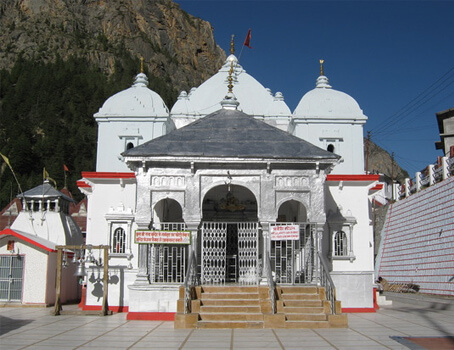
Gangotri – the seat of Goddess Ganga – is frequented by millions of pilgrims each year. The Gangotri Dham is set 19 km from Gaumukh – the place where Ganga River originates. From Gaumukh in the Gangotri Glacier, the river flows as Bhagirathi up to Devprayag. Here, it merges with Alakananda and forms Ganga as we know it.
Legend: According to the Hindu mythology, Goddess Ganga took the form of the river to cleanse the ashes and liberate the souls of King Bhagiratha’s predecessors when Bhagiratha meditated to please the goddess. To minimize the impact of her fall, Lord Shiva placed her in his matted locks. At the point of impact, the goddess came to be known as Bhagirathi.
Places to visit:
- Gangotri Temple: Built in the 18th century by the Gorkha General Amar Singh Thapa, the temple is home to the shrine of Gangotri.
Opening hours: 6:30 am – 2 pm, 3 pm – 9:30 pm; 1st week of May – Diwali
Aarti Time: 3.00 PM to 9.30 PM
- Bhagirath Shila: It is believed to be the holy rock where King Bhagirath prayed to Lord Shiva.
- Submerged Shivling: This Shivalingam is submerged in the waters of River Bhagirathi at Gangotri. According to the Hindu mythology, it is here that Lord Shiva sat to receive Goddess Ganga in his locks.
- Pandava Gufa: A 1.5 km trek from Gangotri takes you to the Pandava Gufa where the Pandavas are believed to have meditated and rested en route Kailash.
Seat of: Goddess Ganga
Altitude: 3048 meters
District: Uttarkashi
State: Uttarakhand
3. Kedarnath Dham Yatra

Located near the head of the River Mandakini in the Himalayas, Kedarnath is flanked by breathtaking snow-clad mountains. The city is named after King Kedar who ruled in the Satya Yuga. The saintly king is believed to be the ruler of the 7 continents. His daughter – Vrinda – is believed to be a partial incarnation of the Goddess Laxmi.
Places to visit:
- Kedarnath Temple: Built in the 8th century by the Hindu philosopher Adi Shankaracharya, the Kedarnath Temple is known to be built in the same vicinity as the ancient temple built by the Pandavas. A conical rock formation inside the temple is worshipped by the devotees as Sadashiva, a form of Lord Shiva.
Opening hours: 6:30 am – 3 pm, 5 pm – 9:30 pm; May – October
Aarti Time: 5.00 PM to 9.30 PM
- Gandhi Sarovar: The lake is believed to the place from where Yudhishthir – the eldest Pandava – departed to heaven.
- Shankaracharya Samadhi: Located very close to the Kedarnath Temple, the place is believed to be the place where Adi Shankaracharya took Samadhi.
- Bhairon Temple: Located 1 km from the Kedarnath Temple, the Bhairon Temple is believed to be the home to the protector of the Kedarnath Temple and valley.
Seat of: Lord Shiva
Altitude: 3553 meters
District: Rudraprayag
State: Uttarakhand
4. Badrinath Dham Yatra

The main deity here is the Lord Vishnu, worshipped in his aspect of Badrinarayan. This Dham is the only one that is a part of both the original Char Dham and the Chhota Char Dham circuits.
Legend: According to the Hindu epic Mahabharata, Badrinath is the place where Nar & Narayana – the dual forms of Lord Vishnu – meditated. The holy town has also been mentioned as a destination that the Pandavas crossed en route heaven. Another popular legend tells that Sage Vyasa authored Mahabharata at a cave in Mana, a destination approximately 4 km from Badrinath.
Places to visit:
- Badrinath Temple: The story goes back to the time of Shankaracharya who discovered a black Saligram stone image of Lord Vishnu in the form of Lord Badrinarayan. He enshrined the same in a cave near Tapt Kund hot springs. In the 16th century, the king of Garhwal moved the stone idol into the present day temple.
Opening hours: 4:30 am – 1 pm, 4 pm – 9:00 pm; May – October
Aarti Time: 10.30 AM to 11.00 AM
- Neelkanth: The ‘Garhwal Queen’ is a snowy peak that forms a pyramid-like background to the Badrinath Temple. The peak, 6597 meters above the sea level, is the first place to receive the sun’s light in the region.
- Tapt Kund: The abode of Lord Agni, Tapt Kund is a hot spring that is famous for its medicinal properties. Surya Kund and Narada Kund are also present in the vicinity.
- Vasudhara Falls: The 400 feet high waterfalls are located 4 km from Badrinath in the Mana Village. It is believed that the water of the falls will turn away from the visitors who are not pure at heart.
Seat of: Lord Vishnu
Altitude: 3133 meters
District: Chamoli
State: Uttarakhand
Mata Murli Temple, Yogadhyan Badri, Alka Puri, Bheem Pal, Sheshnetra, Brahma Kapal, and Satopanth are the other nearby attractions.

